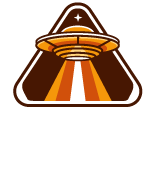The Federal Reserve is a Private Organization That Controls the US Economy
A private organization, the Federal Reserve controls the United States economy, and as such, the politicians and the president must contend with this body to set the proper monetary policy for the country. This is a delicate balance that must be maintained to avoid a speculative bubble, which will cause an even worse economic crisis.
Board of Governors
The Federal Reserve Board of Governors is an agency of the U.S. government that supervises banking and financial institutions. It is also responsible for monetary policy.
The board is made up of seven governors who are confirmed by the U.S. Senate. These members are tasked with supervising the 12 Reserve Banks. They also serve on the Federal Open Market Committee (FOMC), which sets the country’s monetary policy.
The Federal Reserve Board is directly accountable to the Congress. Members of the board testify to Congress and other congressional committees on matters concerning monetary policy and the operations of the Federal Reserve Banks.
In addition to examining banks, the Federal Reserve Board performs examinations on other types of financial institutions. It is also involved in the federal budget.
The Board of Governors has the power to make and change the interest rate charged to commercial banks. In addition, it can also change the reserve requirements for these banks.
Open market operations
The Federal Reserve is the central bank of the United States. It sets the country’s monetary policy and is accountable to the United States Congress. As the central bank, the Fed’s actions influence long-term interest rates, the amount of money in the economy, the price of goods and services, and employment.
The Federal Open Market Committee (FOMC) is the Fed’s monetary policymaking body. It is composed of 12 voting members, including the president of the Federal Reserve Bank of New York. This committee meets at least eight times a year to determine monetary policy.
The FOMC’s primary goals are to maintain price stability and moderate long-term interest rates. In order to achieve these goals, the FOMC uses open market operations. These transactions involve the buying and selling of securities issued by the U.S. Treasury, as well as financial instruments issued by government-sponsored enterprises and other Federal agencies.
The Federal Reserve’s operations also include oversight of the U.S. banking system, as well as the supervision of depository institutions. Depository institutions are required to keep a certain amount of cash as reserves. If a depository institution has an excess of reserve balances, the excess may be used to meet its reserve requirements. However, the excess can also influence the prices of assets.
Speculative bubble
The Federal Reserve is a private organization that has the power to change the supply of money in circulation, which affects the economy. It is a hybrid structure of federal and regional entities.
Basically, the Fed is the central bank of the United States. This means that it has the power to influence the economy and the mortgage payments of millions of families. However, it is not a government agency, so its operations are not subject to the oversight of the Executive branch or Congress.
One of the most important tasks of the Fed is to maintain stable prices and interest rates. Another task is to provide financial services to American depository institutions and foreign official institutions.
To achieve these goals, the Fed must promote moderate long-term interest rates. In doing so, it has a dual mandate: to ensure economic stability and to stimulate the economy.
Aside from these two duties, the Fed also has a number of other responsibilities. For example, it provides a mechanism for the execution of international banking plans.
Politicians battle with the Fed, each other, and the president over monetary policy
The Federal Reserve is the most powerful economic institution in the United States. It is responsible for managing monetary policy and overseeing the banking system.
The Fed’s statutory mandate is to maintain stable prices and maximum employment. It has an option to raise interest rates when needed to tighten the money supply. This is called the “quantitative tightening” approach.
In December 2008, the Fed lowered its federal funds rate from 5.25% to 0%. They also announced a plan to pump trillions of dollars into the economy. By the end of the year, the balance sheet of the Fed had doubled to $9 trillion.
The Fed’s monetary policy has been criticized for its reliance on low interest rates, especially during the Great Recession. Some economists argue that it risks inflation and asset bubbles. Others feel that the Fed favors financial markets over workers.
The FOMC includes five regional bank presidents on a rotating basis. These members meet regularly to discuss future monetary policy.



